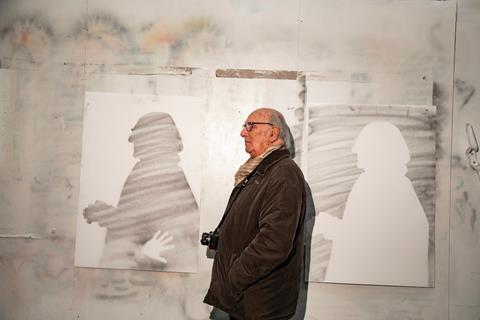Spanish veteran Carlos Saura looks back to the origins of art

Dir: Carlos Saura. Spain. 2022. 75 mins.
Walls Can Talk shows that Spanish veteran Carlos Saura’s long-held fascination with the origin of artistic creation lingers on, which is both remarkable and inspiring in a director who made his first films in the 1950s and who turned 90 earlier this year. Fascinating in its subject, and uneven in its treatment of it, Saura’s documentary explores painting on walls in its oldest and most recent forms, juxtaposing 30,000-year-old cave paintings and 21st century urban street art.
Walls, rather than being divisive, can be bridges, too
Lacking the beauty and technical wizardry of, say, Herzog’s Cave Of Forgotten Dreams, this plays pretty much as straight documentary. But if its contemporary angle is a strategy for hooking in a younger audience, to awaken their interest in where it all started, then all power to it. Limited domestic theatrical release and documentary festivals are the film’s likeliest destination.
Saura makes a rare on-screen performance as an interviewer. He is a good learner, limiting his own contributions to the occasional affirmation of what he’s hearing. He meets, for example. an expert in human evolution, who likens the arrival of our consciousness as a species – the consciousness that gave rise to art – to waking up. The Chauvet Caves in southeastern France, the subject of Herzog’s film, are referred to by artist Miquel Barcelo, who is also a brilliant speaker, as the first masterpiece: Barcelo suggests that rather than advancing, as we like to believe, art has been in decline since then.
Fascinatingly, what we consider to be abstract art, forms rather than representations, is present in the caves as well. Nobody has a clue what it might mean, but one particularly poetic and relevant insight into the Paleolithic mind suggests that they thought that anything that moved – rivers, trees – were actually living beings like themselves.
At the graffiti end of the film, things are inevitably a bit more down to earth. The urban street artists of Madrid and Barcelona are as unknown to most people as the Paleolithics are, though many of us live in cityscapes partly of their making. Saura watches as artists ZETA, SUSO33 and MUSA71 lug their spray cans around and hears them assigning their work its own cultural value, discussing it as a recolonising of the city by its inhabitants, where the work is untainted by the academic, the artists invariably reaffirming their own identity with their brash signatures. The sunshine and vibrant colours of these sections is in marked contrast to the shadowy cave sequences.
Many of the questions raised by Walls Can Talk are simple, endlessly profound, and unanswerable. The first person to spread dye across a cave wall, for example: was it a man or a woman? We don’t know, but we do know the lovely detail that one of them was left-handed and had a dodgy little finger – something we learn from the Paleolothic habit of leaving negative handprints on the wall.
The striking premise of Walls Can Talk remains an odd one: that wall painting kicked off 36,000 years ago and was then somehow abandoned until it came alive again in 1980s New York. What about everything in between? The word ‘fresco’ is barely used and though at one point there’s a hasty reference to Giotto, it’s not enough.
What we’re left with is the notion that all these thousands of years later, we are still driven by the same creative impulses as our predecessors were, making an unbroken thread that runs down through the millennia. This may be general and unoriginal as an insight, but it is heartening to hear one of the grand masters of Spanish cinema telling us that in more ways than one walls, rather than being divisive, can be bridges, too.
Production company: Malvalanda
International sales: Latido Films latido@latidofilms.com
Producers: Maria Del Puy Alvarado, Anna Saura
Screenplay: Carlos Saura, Jose Morillas
Cinematography: Juana Jimenez, Rita Noriega
Editing: Vanessa Marimbert
Music: Alfonso Aguilar






















